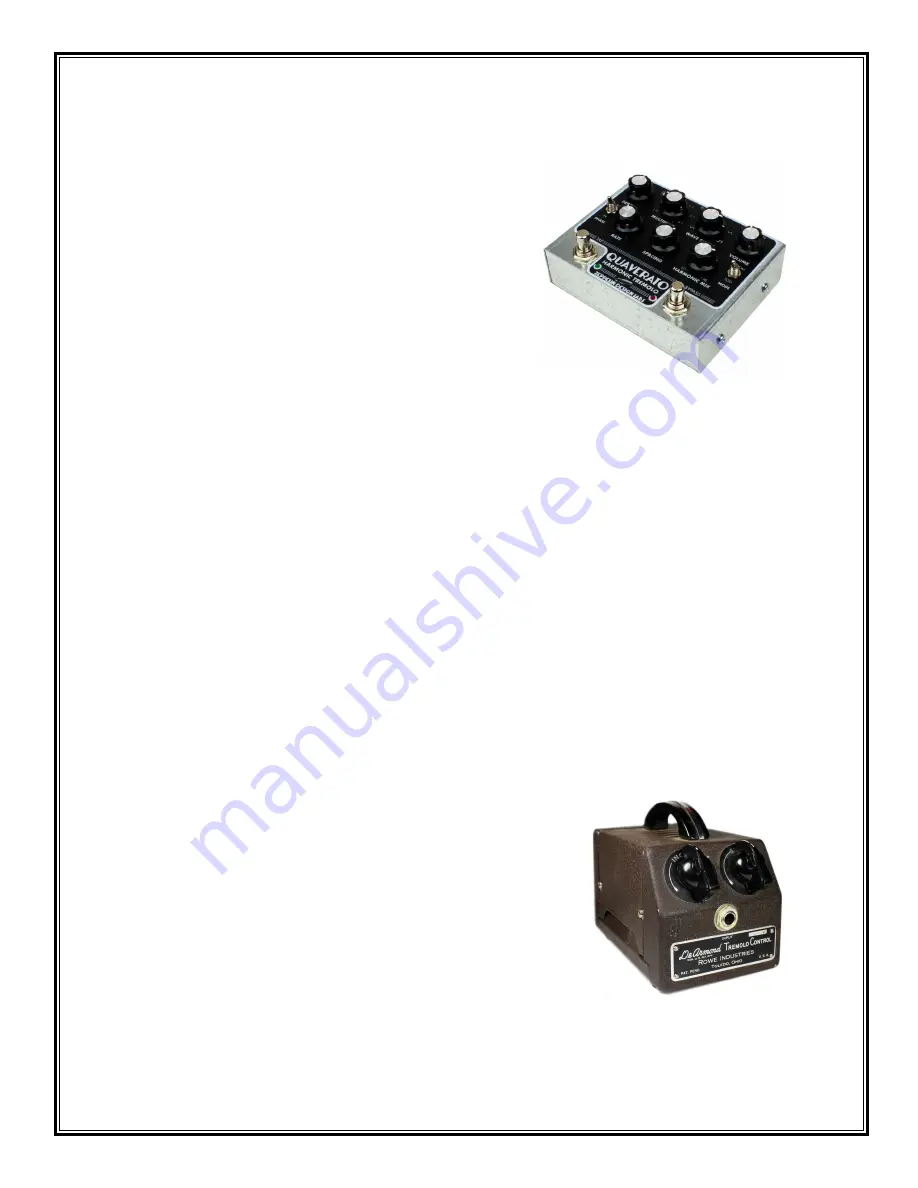
3
INTRODUCTION
The Quaverato is a versatile tap-time tremolo pedal, giving you a wide
range of control over the tremolo speed, depth, wave shape, and duty
cycle (or spacing). The Quaverato can also operate as a harmonic
tremolo, meaning it can apply tremolo independently to
the high and low frequencies. The HARMONIC MIX knob
allows you to blend the effect between these two frequency
ranges. Further, internal controls allow you to change the
cutoff frequencies, so you get to define what is high and what
is low. The Quaverato has an entirely analog signal path including
a true-bypass switching scheme, while still benefiting from the extended
functionality and versatility of digital control.
HOW TREMOLO WORKS
Tremolo is an effect in which the amplitude (or volume) of an audio signal is turned up and down (or
modulated) at a relatively slow rate. You can manually create tremolo by turning the volume knob of
your guitar or amp up and down at a constant rate, but tremolo is usually created electrically with a low
frequency oscillator (LFO) circuit. An LFO is a circuit that creates a relatively slow periodic waveform,
usually slower than 20 oscillations per second (20Hz). In a tremolo effect, the LFO essentially controls
a volume-changing component within the audio signal path.
SOME HISTORICAL CONTEXT
In the early 1940’s the DeArmond company of Toledo, Ohio started manufacturing the very first stand-
alone effect unit: an electro-mechanical tremolo. How this effect worked was very simple, but quite
clever. A variable-speed motor caused a grounded copper can to spin around. Inside this can was a
conductive liquid and an electrode connected to the audio input. As the can spun, the grounded liquid
would slosh around and come into contact with the electrode, causing the audio signal to be shunted
to ground. The audio signal would fade in and out at the rate of the sloshing liquid -- ingenius!
DeArmond originally designed their electro-mechanical tremolo box for use with
electric pianos, but by the 1950’s many guitar amplifier manufacturers
were implementing fully electrical tremolo effects in their amps.
The Fender Company was one of the most notable amp makers to
incorporate tremolo. Ironically enough, Fender mislabeled the effect
as “vibrato” on their amps. Vibrato is the effect which uses an LFO
to modulate the pitch (or frequency) of an audio signal, whereas
tremolo uses the LFO to modulate the volume (or amplitude). They
can sound very similar, but they are, in fact, two different effects. Some
people speculate that Fender labeled the amps “vibrato” to distinguish
them from the pitch-changing whammy bar on their Stratocaster guitar which
Fender was marketing as “tremolo” -- very confusing. It’s no wonder people still
get confused by the meaning of “tremolo” and “vibrato.”




































